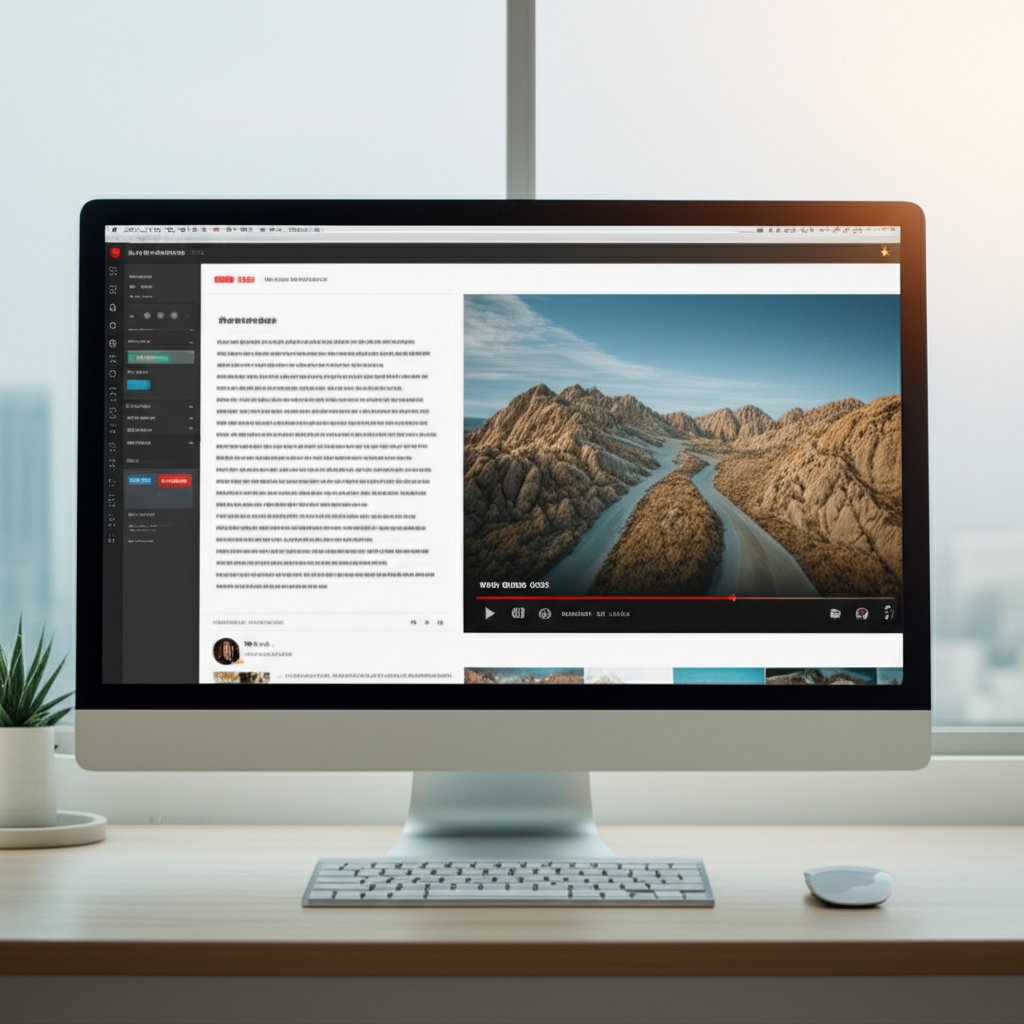Introduction to What Is a Personal Blog
Ever wondered how a simple online diary could transform into a powerful tool for building your brand or even launching a business? If you’ve spent any time online, you’ve probably encountered personal blogs—some filled with heartfelt stories, others packed with expert advice or business insights. But the landscape has changed dramatically. Today, understanding what is a personal blog is essential for anyone aiming to boost their digital presence—whether you’re an individual seeking creative expression or a business owner looking to connect with a wider audience.
Let’s rewind a bit. In the early days of the internet, personal blogs were mostly digital diaries. People used platforms like LiveJournal and Open Diary to share daily experiences, random thoughts, or life updates with a small circle of friends. These early blogs were informal, personal, and often read by just a handful of people. Fast forward to today, and you’ll notice that personal blogs have evolved into much more than just online journals—they’re now dynamic platforms for sharing expertise, building authority, and fostering real communities online (Red Fox Education).
So, what makes a personal blog relevant in today’s digital world? Here’s what you’ll find:
- Personal blogs are creative outlets—your own space to share ideas, passions, or stories without limits.
- They’re also strategic business assets. Many successful entrepreneurs use personal blogs to connect with customers, showcase expertise, and drive sales.
- For businesses, personal blogs offer a unique voice that helps build trust and authority in crowded markets.
- Regular blogging can improve your site’s visibility on search engines, making it easier for people to find you or your business.
In short, the question isn’t just “Should I start a blog?”—it’s about recognizing how personal blogs have grown from simple storytelling platforms into essential tools for personal branding and business growth. Whether you’re aiming to share your journey, teach others, or promote a service, understanding the modern personal blog is the first step toward digital success.

What Exactly is a Personal Blog?
Picture this: you’re searching for advice, inspiration, or a real story—not from a faceless brand, but from someone who’s been there. That’s the heart of a personal blog. But what is a personal blog in today’s digital landscape? Let’s break it down so you can see why these platforms are still so powerful for both personal expression and strategic communication.
Personal Blog Meaning: More Than an Online Diary
At its core, a personal blog is an online platform—think of it as a digital journal—that showcases the thoughts, experiences, expertise, or creative projects of an individual. Unlike corporate or multi-author blogs, a personal blog is deeply rooted in the blogger’s authentic voice and unique perspective. This makes it a space where readers connect directly with the person behind the words, not just the information being shared.
But it’s not just about daily updates or random musings. Today’s personal blogs have evolved into multi-faceted hubs for storytelling, education, and even business-building. Whether you’re sharing travel adventures, health tips, career insights, or creative projects, your personal blog becomes a reflection of your journey and expertise.
Defining Personal Blog Characteristics
Wondering what makes a blog truly “personal”? Here are the hallmark characteristics that set personal blogs apart from other types of online content:
- Authoritative Voice and Authenticity: Posts are written in a first-person or highly personal tone, allowing readers to connect with the blogger’s genuine experiences and insights (LinkedIn).
- Niche Focus: While some personal blogs cover a wide range of topics, most find success by honing in on specific interests or passions—think fitness journeys, minimalist living, parenting, or creative entrepreneurship (Quin Creativ).
- Conversational, Relatable Tone: The writing style is often informal, engaging, and story-driven, making readers feel like they’re part of an ongoing conversation.
- Regular Updates: Successful personal blogs are updated consistently, whether that means weekly stories, monthly project recaps, or frequent tutorials. This consistency helps build a loyal audience.
- Visual and Interactive Elements: Personal blogs often feature photos, videos, polls, comments, or even downloadable resources—bringing stories and advice to life and fostering community.
- Community Building: Through comments, social sharing, and direct engagement, personal blogs create a sense of belonging among readers who share similar interests or challenges.
Why Personal Blogs Matter
Still not convinced of their value? Personal blogs are unique because they combine the credibility of lived experience with the reach of digital publishing. They offer:
- A platform for building authority in your chosen niche
- Opportunities to share your story and inspire others
- Connections with like-minded individuals around the world
- Potential for turning passion projects into professional opportunities
As you explore the world of personal blogs, you’ll notice that each one is as unique as its creator. Next, let’s examine if personal blogs are still relevant in a world dominated by social media—and why they might be more important than ever.
Are Personal Blogs Still a Thing in Today's Digital World?
When scrolling through endless Instagram feeds or catching up on the latest TikTok trends, you might wonder: Are personal blogs still relevant in an era dominated by short-form, social-first content? It’s a fair question—after all, social media platforms seem to offer instant connection and rapid feedback. But take a closer look, and you’ll find that personal blogs are not only alive—they’re thriving and evolving in ways that social media simply can’t match.
Why Personal Blogs Endure in a Social-First World
Here’s the truth: while social media is great for real-time engagement, personal blogs offer strategic advantages that stand the test of time. If you’re weighing personal blog vs social media for long-term brand-building or business growth, consider these enduring benefits:
- Content Ownership and Control: Unlike social media, where your content is subject to platform rules and ever-changing algorithms, your personal blog is your own digital property. You control the design, content, and user experience. Even if a social platform disappears or bans your account, your blog and its audience remain yours.
- SEO and Evergreen Visibility: Well-written blog posts can attract organic search traffic for years. Social posts, on the other hand, have a fleeting shelf life—often disappearing from feeds in days or even hours. Blogs allow you to conduct keyword research, optimize for search intent, and build a resource hub that keeps working for you long after publication.
- Authority and Thought Leadership: Personal blogs provide the space to dive deep into your expertise, share original insights, and build credibility in your niche. While social media favors quick takes, blogs reward depth and nuance—qualities that help establish you as a go-to resource in your field (Vocal Media).
- Direct Audience Relationships: On your blog, you can nurture an email list, invite comments, and create a genuine community. Social media connections are often at the mercy of algorithmic reach, but a blog gives you direct access to your readers and more ways to keep them engaged.
- Monetization and Business Potential: From affiliate marketing and digital products to sponsored content and membership models, personal blogs offer diverse income streams. Many successful creators and professionals use their blogs as both a portfolio and a revenue engine—something that’s much harder to achieve on borrowed social platforms.
Adapting to the Modern Content Landscape
Sounds complex? Imagine this: you publish a thoughtful, in-depth article on your blog and then repurpose key points into Instagram stories, LinkedIn posts, or even a YouTube video. This strategy not only maximizes your reach but also gives your original content a longer life and wider impact. In fact, many experts recommend starting with a blog as your core content hub, then using social media to amplify and distribute your message.
Ultimately, the question isn’t just "What Is a Personal Blog?"—it’s about understanding how blogs fit into today’s digital ecosystem. Personal blogs remain a strategic asset, especially when paired with smart content services like BlogSpark that help you scale, optimize, and repurpose your work for every channel. Next, let’s compare the blog website to social platforms like Instagram, so you can choose the right foundation for your unique goals.

Personal Blog on Instagram vs. Traditional Blog Website
When you hear the term “personal blog,” do you picture a beautifully curated Instagram feed or a traditional blog website packed with stories, tips, and in-depth guides? With so many options for sharing your voice online, it’s easy to feel torn between platforms. Let’s break down the real differences between a personal blog on Instagram and a traditional personal blog website—so you can confidently choose the best foundation for your goals.
Microblogging on Instagram: Fast, Visual, and Social
Imagine scrolling through Instagram: quick updates, eye-catching visuals, and snappy captions. This is microblogging in action. Instagram’s “personal blog” label lets you share your story in bite-sized pieces, perfect for our fast-paced, mobile-first world. Here’s why many creators love Instagram microblogging:
- Instant feedback: Likes, comments, and DMs let you connect with followers in real-time.
- Visual-first storytelling: Photos, videos, and stories make your content pop.
- Short-form content: Quick posts keep your audience engaged without a big time investment.
- Built-in audience: Tap into Instagram’s massive user base for rapid exposure.
But there are trade-offs. Instagram content moves quickly—posts can get buried in feeds within hours. Plus, you’re always playing by the platform’s rules and algorithms, and you don’t truly own your audience or your content.
Traditional Blog Website: Depth, Control, and Long-Term Value
Now, imagine settling in with a long-form article on a traditional blog website. Here, you can dive deep, tell richer stories, and build a lasting resource for your readers. A traditional blog offers:
- Full ownership: Your content, your design, your rules. No risk of losing everything to a platform change.
- SEO power: Well-optimized blogs rank on Google, bringing in organic traffic for years—not just hours.
- Monetization options: From affiliate links to digital products, a blog supports multiple income streams.
- Evergreen content: Posts stay relevant and discoverable long after publication.
- Direct audience relationships: Build an email list, foster community, and nurture loyal followers outside of social algorithms.
Sounds complex? It can be. Setting up a traditional blog website requires more strategy, technical setup, and ongoing effort—but the long-term rewards are substantial.
Instagram vs. Blog Website: A Side-by-Side Comparison
| Feature | Personal Blog on Instagram | Traditional Personal Blog Website |
|---|---|---|
| Content Ownership | Instagram controls your content; risk of account loss | You fully own and control your site and posts |
| SEO & Discoverability | Limited to hashtag/search within Instagram; no Google search benefits | Strong SEO potential; can rank on Google and drive organic traffic |
| Content Longevity | Posts have a short shelf life (hours or days) | Blog posts remain discoverable and relevant for years |
| Monetization | Sponsored posts, affiliate links (with restrictions), limited options | Multiple streams: ads, affiliates, products, memberships, services |
| Audience Control | Followers managed by Instagram’s algorithm; limited direct contact | Build direct relationships via email lists and community tools |
| Customization | Limited to Instagram’s design and features | Full design and branding control; endless customization |
| Analytics | Basic insights (reach, likes, engagement) | Advanced analytics (traffic sources, SEO, audience behavior) |
So, What Is a Personal Blog? In today’s landscape, it’s more than just a label on Instagram—it’s a strategic decision about how you want to share your story, grow your influence, and build a digital asset that lasts. If you’re serious about building authority, attracting organic traffic, and creating long-term value, a traditional personal blog website is the clear winner for most businesses and creators. Next, let’s explore how you can launch your own blog from scratch—even if you’re just starting out.

How to Start a Personal Blog From Scratch
Ever asked yourself, "How do I actually start a personal blog?" If you’re feeling overwhelmed by all the moving parts, you’re not alone. Launching a blog is exciting, but it does require strategic thinking at every step. Below, we break down the process into clear, actionable stages—so you can move from idea to published post with confidence. Whether you’re a hobbyist or a future business owner, these steps will help you build a solid foundation for long-term success.
Step 1: Define Your Niche and Audience
Sounds simple, right? But this is where many personal blog for beginners stumble. Your niche is the central theme or topic your blog will focus on, and your audience is the group of people you want to reach. Ask yourself:
- What topics am I truly passionate about? (e.g., vegan baking, solo travel, productivity hacks)
- Who do I want to help or connect with? (e.g., busy parents, aspiring entrepreneurs, creative hobbyists)
- What unique perspective or experience can I share?
Niching down is key. For instance, instead of a broad travel blog, consider “eco-friendly family travel in the US.” This focus helps attract a loyal, engaged readership and makes your blog stand out in a crowded space.
Step 2: Choose a Memorable Domain Name
Your domain name is your blog’s digital home address. It should be short, memorable, and relevant to your niche. For personal blogs, using your own name or a clever twist on your topic can work well. Before settling, check domain availability using a registrar like Namecheap or GoDaddy. If your first choice is taken, try different extensions (.com, .net) or creative variations.
Step 3: Select a Reliable Hosting Provider
Every blog needs a place to live online. Web hosting is the service that stores your site’s files and makes them accessible to readers. For beginners, shared hosting is affordable and user-friendly. Popular providers like BlueHost or SiteGround offer one-click WordPress installation, making setup a breeze.
Step 4: Pick the Right Blogging Platform
When it comes to how to start a personal blog, the platform you choose will shape your blogging experience. WordPress.org is the gold standard for flexibility and growth, but there are other options like Squarespace and Wix. Consider:
- WordPress.org: Most customizable, ideal for those who want full control and future monetization.
- Squarespace/Wix: Drag-and-drop builders, great for design-focused beginners.
- Medium: Simplicity and built-in audience, but limited branding and monetization options.
For most long-term bloggers, WordPress.org is the best bet—especially if you want to grow your blog into a business.
Step 5: Design and Customize Your Blog
Think of your blog’s design as its curb appeal. Choose a clean, mobile-friendly theme that matches your personal style and niche. Many platforms offer free and premium themes—WordPress has thousands, from minimalist to photo-heavy layouts. Customize your colors, fonts, and logo to make your blog uniquely yours.
Step 6: Create Essential Pages
Before publishing your first post, set up these must-have pages:
- About: Share your story, mission, and what readers can expect.
- Contact: Make it easy for readers and potential partners to reach you.
- Privacy Policy/Legal: Protect yourself and your readers, especially if you collect emails or run ads.
These pages build trust and help you look professional from day one.
Step 7: Develop a Content Strategy
Now comes the heart of blogging—creating and planning your content. Start with a list of post ideas that answer common questions, solve problems, or share personal stories relevant to your niche. Use keyword research tools (like Google Trends or SEMrush) to find topics your audience is searching for. Build an editorial calendar to stay consistent and avoid writer’s block.
Step 8: Write and Publish Your First Posts
It’s time to go live! Craft your first posts with a clear headline, engaging introduction, and actionable takeaways. Use images, bullet points, and subheadings for easy reading. Don’t forget to optimize your posts for SEO—include keywords naturally, add meta descriptions, and use internal links where relevant.
Step 9: Promote Your Blog
Once your content is live, share it across your social media channels, join relevant online communities, and ask friends or colleagues to spread the word. Consider building an email list from the start so you can nurture and grow your audience over time.
Step 10: Analyze, Improve, and Scale
Monitor your blog’s performance using tools like Google Analytics. Track which posts get the most views, where your traffic comes from, and what readers engage with most. Use these insights to refine your content strategy and grow your influence.
Is It Worth Doing It All Yourself?
When you see all these steps laid out, you might think, “This is a lot for one person!” And you’d be right. Blogging is rewarding but time-intensive—especially if you want your personal blog to become a business asset. Many creators eventually outsource content writing, technical setup, or promotion to focus on their strengths and save time (Magnet4Blogging). Outsourcing can help you scale faster while maintaining quality and consistency.
So, What Is a Personal Blog? It’s more than just a digital diary—it’s a platform built on strategic decisions, creativity, and ongoing effort. Whether you’re starting solo or with a team, following these steps will set you up for blogging success. Next, let’s discuss the writing styles that make personal blogs stand out and how to choose the right voice for your content.
Are Blogs Written in First Person?
When you land on a personal blog, do you expect to hear "I" and "my"—or do you notice a more distant, objective tone? The answer often shapes your reading experience and the connection you feel with the author. So, are most personal blogs written in first person, or is there room for other approaches? Let’s break down the most common personal blog writing style options and how each impacts your message and audience engagement.
The Power of First Person: Building Intimacy and Trust
Imagine reading a blog post that starts, “When I began my journey as a freelancer, I faced a lot of uncertainty.” This first person blog style immediately draws you into the writer’s personal world. Here’s why first person is so popular for personal blogs:
- Authenticity: Sharing stories from your own perspective creates a sense of honesty and vulnerability. Readers feel like they’re getting the real story—straight from you.
- Connection: First person writing helps readers relate to your experiences, building a stronger emotional bond. It’s especially powerful for memoirs, advice columns, or lifestyle blogs where personal insight matters most.
- Distinctive voice: Using “I” or “we” lets your unique style and personality shine through, helping you stand out in a crowded blogging landscape.
First person is ideal when your goal is to share your journey, opinions, or lessons learned. It’s the go-to style for building a loyal, engaged audience who want to know the person behind the words.
Third Person: Authority, Objectivity, and Flexibility
But what if you want to present information more formally or appeal to a broader audience? That’s where third person comes in. Instead of “I,” you’ll see phrases like “the blogger,” “readers,” or “they.” This approach offers several benefits:
- Objectivity: Third person writing creates distance between the writer and the content, making it feel more neutral and authoritative. This is useful for news, research summaries, or thought leadership pieces where personal opinion is less important (Go WordPress).
- Broader appeal: By focusing less on personal experience and more on general knowledge or trends, third person blogs can reach readers who may not share the author’s background.
- Professional tone: For business blogs or multi-author platforms, third person can reinforce a consistent, brand-focused voice, especially when multiple contributors are involved.
While third person can feel less intimate, it’s a strategic choice when you want to highlight expertise, present research, or keep the focus on the topic—not the storyteller.
Choosing the Right Narrative Voice for Your Blog
So, What Is a Personal Blog? It’s not just about the topics you cover, but also the voice you use to tell your story. Many successful bloggers blend first and third person styles depending on the content and goals of each post. The key is consistency—choose a narrative approach that matches your brand, connects with your audience, and supports your blog’s purpose.
Next, let’s explore the best platforms for building your personal blog, and how your writing style can shape your long-term success online.
Choosing the Right Platform for Your Personal Blog
When you’re ready to launch your personal blog website, one of the most important decisions you’ll make is selecting the right platform. Sounds simple? Yet, the platform you choose will shape everything—from your blog’s design and scalability to your ability to monetize and grow your audience. If you’re aiming for long-term business success, understanding the strengths and trade-offs of each option is crucial. Let’s break down the best platform for personal blog growth, focusing on the needs of business-minded creators.
WordPress.org: The Powerhouse for Growth and Customization
- Pros:
- Unmatched flexibility and control—customize every aspect of your site with thousands of themes and plugins.
- Open-source and free to use (you only pay for hosting and your domain).
- Ideal for SEO: WordPress.org is widely recognized as the top platform for search engine optimization, with advanced tools and plugins to boost your rankings.
- Scalable for business: Supports everything from personal blogs to full-scale e-commerce and membership sites.
- You own your content and have full data portability.
- Cons:
- Steeper learning curve for beginners—requires setup, hosting, and ongoing management.
- Some technical knowledge is helpful, especially as your site grows.
- Finding and configuring plugins or themes can feel overwhelming at first.
Expert tip: If you want a personal blog website that can grow with your ambitions, WordPress.org is the gold standard. However, expert help (through managed hosting or professional content services) can save you time and ensure your blog is set up for maximum impact (Elegant Themes).
Squarespace & Wix: Design-First, User-Friendly Builders
- Pros:
- Drag-and-drop simplicity—no coding required, making them accessible for beginners.
- Beautiful, professionally designed templates that are easy to customize.
- All-in-one solutions: hosting, security, and support are included in your monthly fee.
- Wix, in particular, offers strong monetization and analytics tools for quick blog growth.
- Cons:
- Less flexibility and fewer customization options compared to WordPress.org.
- SEO features are improving but still not as robust or advanced.
- Monthly fees can add up, especially as your needs grow.
- Migration to another platform later can be challenging.
If you want to get online fast with minimal setup and prioritize design, Squarespace or Wix are solid choices. Just remember: as your blog evolves, you may eventually outgrow their limitations.
Medium: Simplicity and Built-In Audience
- Pros:
- Zero setup—just sign up and start publishing.
- Access to a built-in community of readers and writers.
- Clean, distraction-free writing environment.
- Cons:
- Very limited customization—no control over design or branding.
- Monetization options are restricted to Medium’s Partner Program.
- You don’t own your audience or content in the same way as a self-hosted blog.
Medium is best if your primary goal is to write and connect with an existing audience, rather than build a standalone business asset.
Making the Best Choice for Your Business Goals
So, What Is a Personal Blog? At its core, it’s a platform for your unique voice—but the right foundation can turn that voice into a scalable, profitable business. If you’re serious about growth, investing in a platform like WordPress.org (with expert setup and guidance) will pay dividends in flexibility, SEO, and future monetization. For those just starting or prioritizing ease of use, Squarespace and Wix offer a quick path to launch, while Medium is ideal for pure writers who want to tap into a ready-made audience.
As you weigh your options, consider your long-term vision, technical comfort, and business goals. Up next, let’s talk about how you can turn your personal blog into a real source of income—and what it takes to make that leap.

Can You Make Money From a Personal Blog?
Ever wondered if your blog could actually pay the bills—or even become a full-time business? If you’re asking yourself whether it’s possible to monetize a personal blog, the answer is a resounding yes. In fact, many bloggers have turned their sites into profitable ventures, some earning thousands every month. But how do they do it, and what steps can you take to start generating your own personal blog income?
Top Ways to Monetize a Personal Blog
Let’s break down the most effective strategies that real bloggers use to turn passion into profit. Each method has its own strengths, and most successful bloggers use a combination of these income streams for stability and growth:
- Display Ads: Once your blog attracts regular traffic, you can join ad networks like Mediavine or Google AdSense. You earn money based on the number of impressions or clicks your ads receive. This is a classic way to generate passive income as your audience grows.
- Affiliate Marketing: Recommend products or services you genuinely use. When readers click your special affiliate links and make a purchase, you earn a commission. This method is beginner-friendly and doesn’t require a huge audience to start seeing results. Some bloggers report affiliate sales making up the majority of their income—sometimes over $70,000 from a single blog.
- Sponsored Content: As your blog’s influence grows, brands may pay you to feature their products or create sponsored posts. These collaborations can be highly lucrative—sometimes netting hundreds or even thousands of dollars per post, depending on your niche and reach.
- Digital Products: Create and sell your own ebooks, courses, printables, or templates. Digital products are scalable and can generate passive income long after the initial work is done. Many bloggers find this to be the most profitable and flexible way to monetize their site (The She Approach).
- Services: Offer freelance writing, coaching, consulting, or virtual assistant services directly through your blog. Your blog becomes a portfolio that attracts clients and demonstrates your expertise.
Keys to Maximizing Personal Blog Income
Sounds exciting? Here’s what you need to know before you jump in:
- Quality and Consistency: No matter which monetization method you choose, consistent, high-quality content is the foundation. Readers—and brands—are drawn to blogs that deliver value and show up regularly. One well-optimized, helpful post can outperform several rushed ones.
- Diversify Your Income: Relying on just one source (like ads or affiliates) can be risky. Successful bloggers often combine multiple streams—ads, affiliate programs, digital products, and services—to create stable, growing income.
- Track and Optimize: Use tools like Google Analytics to monitor which posts and strategies drive the most revenue. Double down on what works, and don’t be afraid to pivot as your audience evolves.
How Professional Content Solutions Can Help
Feeling overwhelmed by the demands of creating consistent, high-quality content? Many entrepreneurs and businesses turn to expert solutions like BlogSpark to streamline their workflow and scale their results. By automating tedious writing tasks and optimizing for SEO from the start, you free up time to focus on growth and monetization—without sacrificing quality or brand voice.
So, What Is a Personal Blog? It’s not just a creative outlet—it’s a real asset that, with the right strategy and support, can generate meaningful income and open doors to new opportunities. Next, let’s recap the essential elements that set successful personal blogs apart and help them thrive in a competitive digital landscape.
Critical Elements of a Successful Personal Blog
Ever wondered why some blogs take off while others struggle to gain traction? If you’re aiming for a successful personal blog, it’s not just about writing what you love—it’s about building a strong foundation and following proven strategies. Imagine you’re about to launch or revamp your blog. What should you focus on first? Use the checklist below to ensure you’re covering all the essentials that separate thriving blogs from the rest.
| Success Ingredient | Why It Matters | Pro Tip |
|---|---|---|
| Clear Niche Definition | Focusing your blog on a specific topic or audience helps you attract loyal readers and stand out in a crowded space. | Choose a niche that matches your passion and expertise, but is also broad enough to offer content variety. |
| In-Depth Keyword Research | Understanding what your target audience is searching for ensures your content gets found on search engines. | Use tools like SEMrush or Google Keyword Planner to guide your content topics and optimize for SEO. |
| High-Value, Unique Content | Quality content that solves problems or inspires readers is the backbone of every successful blog. | Answer your readers’ real questions and provide actionable tips, not just opinions. |
| Consistent Publishing Schedule | Regular updates signal to both readers and search engines that your blog is active and trustworthy. | Set a realistic posting calendar and stick to it—consistency beats frequency. |
| Strong On-Page SEO | Optimized headlines, meta descriptions, internal links, and images help your posts rank higher and attract more visitors. | Install an SEO plugin or use built-in tools to analyze and improve each post before publishing. |
| Clear Calls to Action (CTAs) | Guiding readers to comment, share, subscribe, or buy keeps them engaged and grows your community or business. | Place CTAs naturally within your posts—invite discussion, offer freebies, or direct readers to your services. |
| Audience Engagement | Responding to comments and emails builds trust and fosters a loyal following. | Encourage feedback and interact regularly to show you value your readers. |
| Smart Promotion & Networking | Sharing your content on social media, collaborating with others, and building backlinks amplifies your reach. | Join niche communities and use share buttons to make your posts easy to distribute. |
| Analytics & Continuous Improvement | Tracking what works (and what doesn’t) helps you refine your strategy and grow faster. | Use Google Analytics to monitor traffic, popular posts, and reader behavior. |
Putting It All Together: Your Roadmap to Personal Blog Success
Sounds like a lot? When you break it down, each step is manageable—and together, they form a proven blueprint for a successful personal blog. The best part? Many professional content services (like BlogSpark) are designed to help you master these essentials, from SEO optimization to content strategy and analytics, freeing you up to focus on your unique voice and vision.
So, What Is a Personal Blog? It’s your platform for growth, connection, and opportunity—powered by a foundation of strategic planning and consistent, high-value execution. Ready to see how all these elements come together for long-term results? In the next section, we’ll show you how to unlock the full power of your personal blog and scale your impact even further.
Conclusion
Imagine your blog not just as a digital diary, but as a living, breathing engine for your brand and business. Throughout this guide, you’ve seen how a well-executed personal blog can transform from a passion project into a strategic asset—one that builds authority, nurtures loyal audiences, and drives real business results. But what does it take to truly unlock this potential?
Consistency, Expertise, and a Growth Mindset
Sounds overwhelming? You’re not alone. Many creators and entrepreneurs start strong but struggle to maintain the quality and consistency needed for long-term impact. The secret to lasting success lies in:
- Consistent publishing: Regular, high-value posts keep your audience engaged and signal credibility to search engines.
- Strategic content planning: Aligning every post with your business goals and your audience’s real needs.
- Continuous improvement: Using analytics to refine your approach and double down on what works.
- Professional polish: From SEO optimization to compelling storytelling, every detail matters when you want your personal blog for business to stand out.
But achieving all this—while running a business or managing your day-to-day—can be daunting. That’s where leveraging expert support makes the difference.
Scale Smarter with the Right Blog Writing Service
If you’re ready to scale up without burning out, partnering with a trusted blog writing service can be a game-changer. Services like BlogSpark empower you to:
- Publish more content, more often—without sacrificing quality or your unique brand voice.
- Tap into advanced SEO strategies and proven frameworks that drive organic traffic and leads.
- Free up your time to focus on business growth, creative direction, or personal priorities.
So, What Is a Personal Blog? At its best, it’s your launchpad for influence, income, and impact—a platform that grows with you and your ambitions. As you move forward, consider what’s possible when you combine your vision with expert execution. Whether you’re starting out or ready to scale, take the next step: invest in your blog’s success and watch your brand’s story unfold.
Frequently Asked Questions About Personal Blogs
1. What is the main purpose of a personal blog?
A personal blog serves as a digital platform for individuals to share their experiences, insights, or expertise in a unique and authentic voice. It helps build personal branding, connect with like-minded audiences, and can also support business growth by establishing authority in a chosen niche.
2. Are personal blogs still relevant in the age of social media?
Yes, personal blogs remain highly relevant. Unlike social media, a personal blog offers full ownership of content, stronger SEO opportunities, and the ability to build direct relationships with readers. Blogs can serve as a long-term asset for authority-building and business growth, while social media content is often short-lived.
3. How is a personal blog on Instagram different from a traditional blog website?
A personal blog on Instagram focuses on microblogging with visual, short-form content and instant engagement, but offers limited content control and monetization options. A traditional blog website provides full ownership, deeper content, better SEO, and more ways to monetize and grow your audience over time.
4. Can you make money from a personal blog, and if so, how?
Absolutely. Bloggers can earn income through display ads, affiliate marketing, sponsored content, selling digital products, or offering services. Consistent, high-quality content and a well-defined niche are key to attracting traffic and monetization opportunities.
5. What is the best platform for starting a personal blog?
WordPress.org is widely considered the best choice for long-term growth and flexibility, offering robust SEO and customization features. Squarespace and Wix are user-friendly for beginners, while Medium is ideal for simple publishing but lacks ownership and advanced monetization options.




